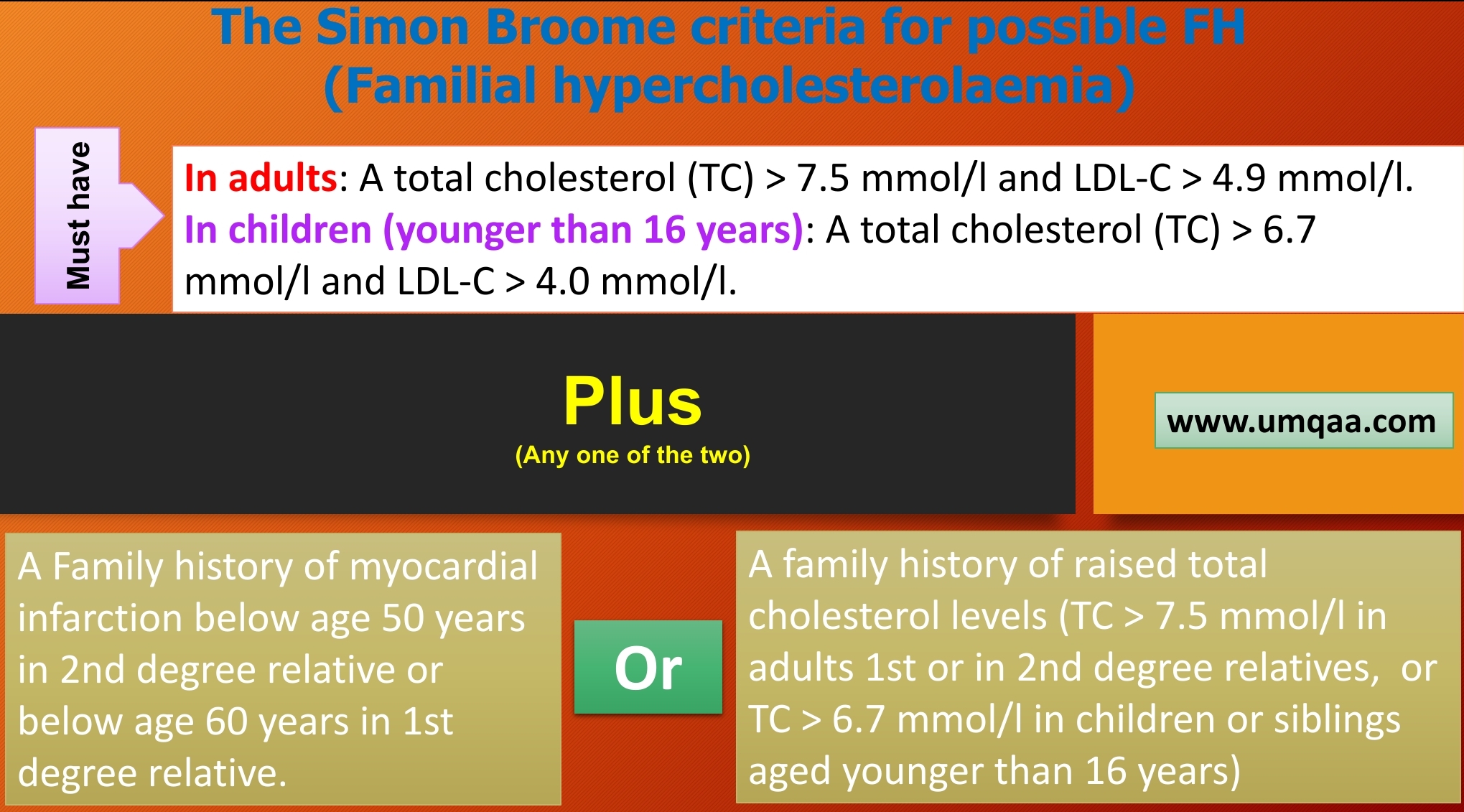The Simon Broome criteria for FH (Familial hypercholesterolaemia):
The Simon Broom criteria are developed to diagnose the FH; it is used for both definite FH and possible FH.
The criteria for definite FH:
The criteria for possible FH:
Additional:
Familial hypercholesterolaemia (FH), AKA autosomal dominant hypercholesterolaemia (ADH) type 1, is an autosomal dominant (AD) condition characterized by elevated levels of LDL-C in the absence of hypertriglyceridaemia. It is a more severe lipid disorder with a prevalence of at least 0.4% in most populations.
It is usually caused by loss-of-function mutations affecting the LDLR (LDL-receptor) gene. The reduction in LDL receptor activities in the liver results in a reduced rate of clearance of LDL from the circulation. The plasma level of LDL increases to such a level that the rate of LDL production equals the rate of LDL clearance by residual LDL receptor as well as non-LDL receptor mechanisms. The elevated levels of LDL-C in FH are primarily due to delayed removal of LDL from the blood. Besides, as the removal of IDL is also delayed, the production of LDL from IDL also increases. Most patients with FH have LDL-C levels that are approximately twice as high as in normal subjects of the same age and gender.
Affected patients suffer from severe hypercholesterolaemia and premature cardiovascular disease. FH may be accompanied by xanthomas of the Achilles or extensor digitorum tendons, which are strongly suggestive of FH. The onset of corneal arcus before age 40 is also suggestive of this condition. Identification of an index case of FH (the first case of FH in a family) should trigger genetic and biochemical screening of other family members, which is a cost-effective method for case detection. Affected individuals should be managed from childhood.
Sources:
- Step Up To MRCP Review Note For Part I & Part II By Dr Khaled El Magraby 366
- www.heartuk.org.uk
- Davidsons Principles and Practice of Medicine 23 edition; page: 374
- Harrison’s Principles of Internal Medicine 2 volumes 19th Edition; page: 2441







0 Comments